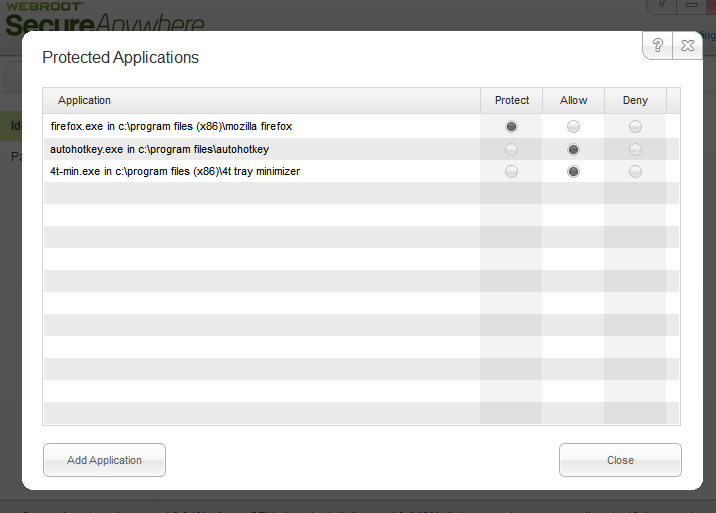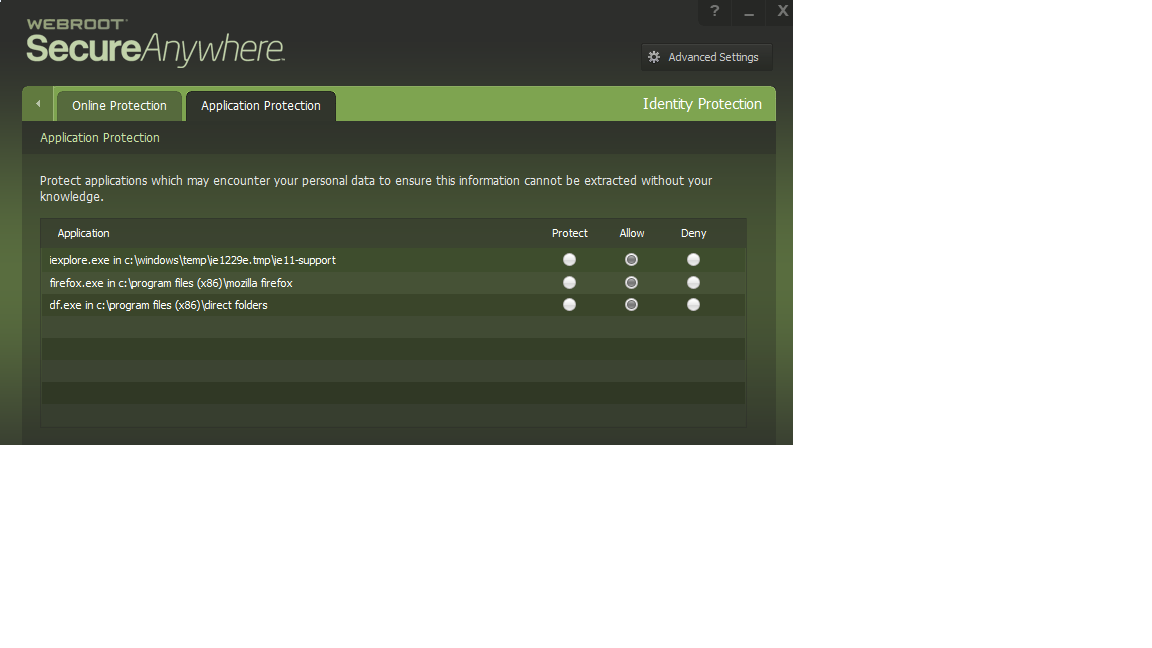Solved
Allowing an AutoHotKey script to run in browsers
I use a program called AutoHotKey that allows me, through a script, to type certain diacritical characters using hotstrings (so something like a'' will automatically change into an a-with-acute-accent). Webroot, however, blocks the script from working in browsers like Chrome, which is very unfortunate. Is there some way I can change the settings of Webroot to allow this script/program to function inside browsers?
Best answer by JimM
That's the file, and you're in the right place.
An issue like this really needs to be communicated to Support to facilitate a proper investigation, but I'll try to provide what guidance I can. I'd encourage users with this issue to go through Support however.
It's possible that the AutoHotKey issue you're experiencing is dependent on what you're doing with it. If, for instance, AutoHotKey is accessing protected credentials and functioning as a password manager, perhaps unchecking "Prevent programs from accessing protected credentials" in the Identity Shield settings might help. If so, that would be indicative of Webroot behaving as designed in this situation.
Another scenario in which it might be behaving as designed is that maybe this is happening specifically within a browser because that browser is protected in certain ways that you may not want in your case. For instance, if you open up View/Edit Protected Websites in the Identity Shield, you'll see settings for HTTPS and HTTP sites. You'll notice that when it's set on Maximum, there is an indicator that it "Provides maximum protection of user data, but blocks accessibility utilities." AutoHotKey can be used as an accessibility utility, so one of the settings could be at issue. My suggestion here would be to first see if setting it to None helps. If so, re-add the shields one by one until you discover which one is causing your particular issue. That would be the self-help solution if your particular problem is due to settings in that area of the program. Support would likely benefit from taking a look at your script to approach your case in a more targetted manner.
Or it's possible it's not dependent on what AutoHotKey is doing and is acting up regardless. You could test that by running an innocuous script that enters some text into NotePad when you hit one of the keys on your keyboard. In which case, barring a different conclusion from Support, this issue would be documented, reproduced, and turned over to Development for further review at that point.
I hope this information is helpful!
An issue like this really needs to be communicated to Support to facilitate a proper investigation, but I'll try to provide what guidance I can. I'd encourage users with this issue to go through Support however.
It's possible that the AutoHotKey issue you're experiencing is dependent on what you're doing with it. If, for instance, AutoHotKey is accessing protected credentials and functioning as a password manager, perhaps unchecking "Prevent programs from accessing protected credentials" in the Identity Shield settings might help. If so, that would be indicative of Webroot behaving as designed in this situation.
Another scenario in which it might be behaving as designed is that maybe this is happening specifically within a browser because that browser is protected in certain ways that you may not want in your case. For instance, if you open up View/Edit Protected Websites in the Identity Shield, you'll see settings for HTTPS and HTTP sites. You'll notice that when it's set on Maximum, there is an indicator that it "Provides maximum protection of user data, but blocks accessibility utilities." AutoHotKey can be used as an accessibility utility, so one of the settings could be at issue. My suggestion here would be to first see if setting it to None helps. If so, re-add the shields one by one until you discover which one is causing your particular issue. That would be the self-help solution if your particular problem is due to settings in that area of the program. Support would likely benefit from taking a look at your script to approach your case in a more targetted manner.
Or it's possible it's not dependent on what AutoHotKey is doing and is acting up regardless. You could test that by running an innocuous script that enters some text into NotePad when you hit one of the keys on your keyboard. In which case, barring a different conclusion from Support, this issue would be documented, reproduced, and turned over to Development for further review at that point.
I hope this information is helpful!
Login to the community
No account yet? Create an account
Enter your E-mail address. We'll send you an e-mail with instructions to reset your password.





